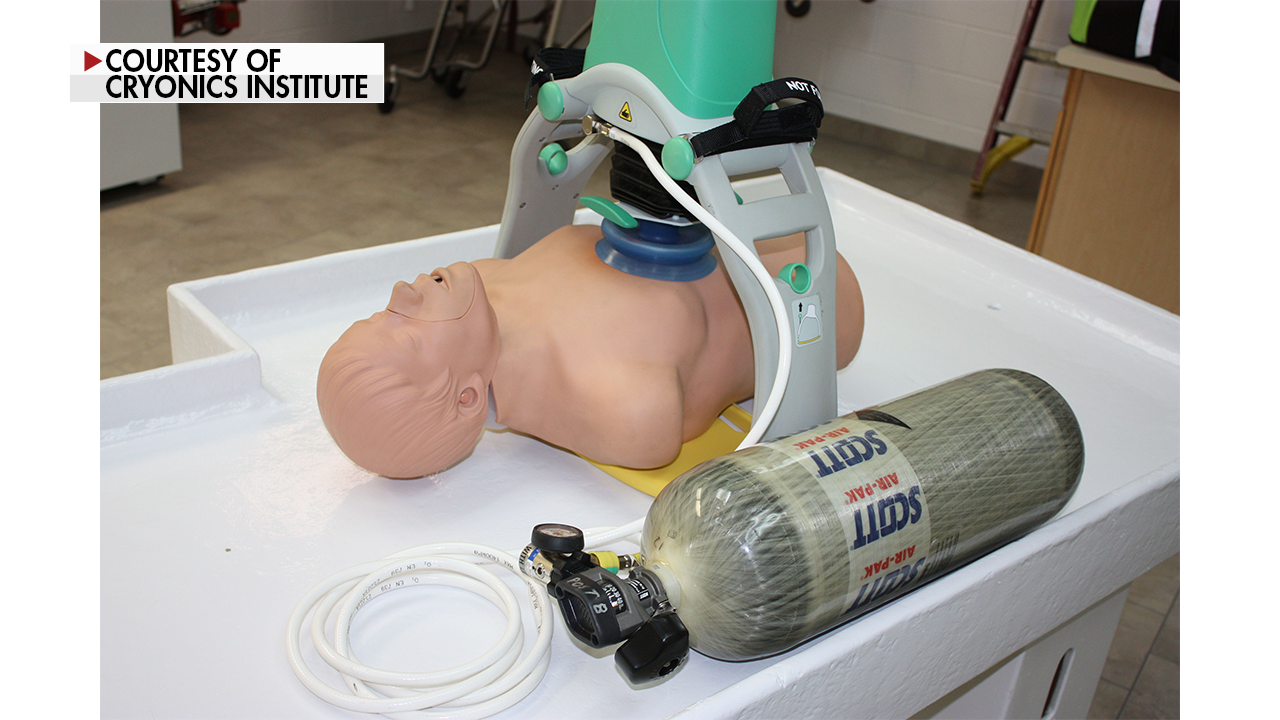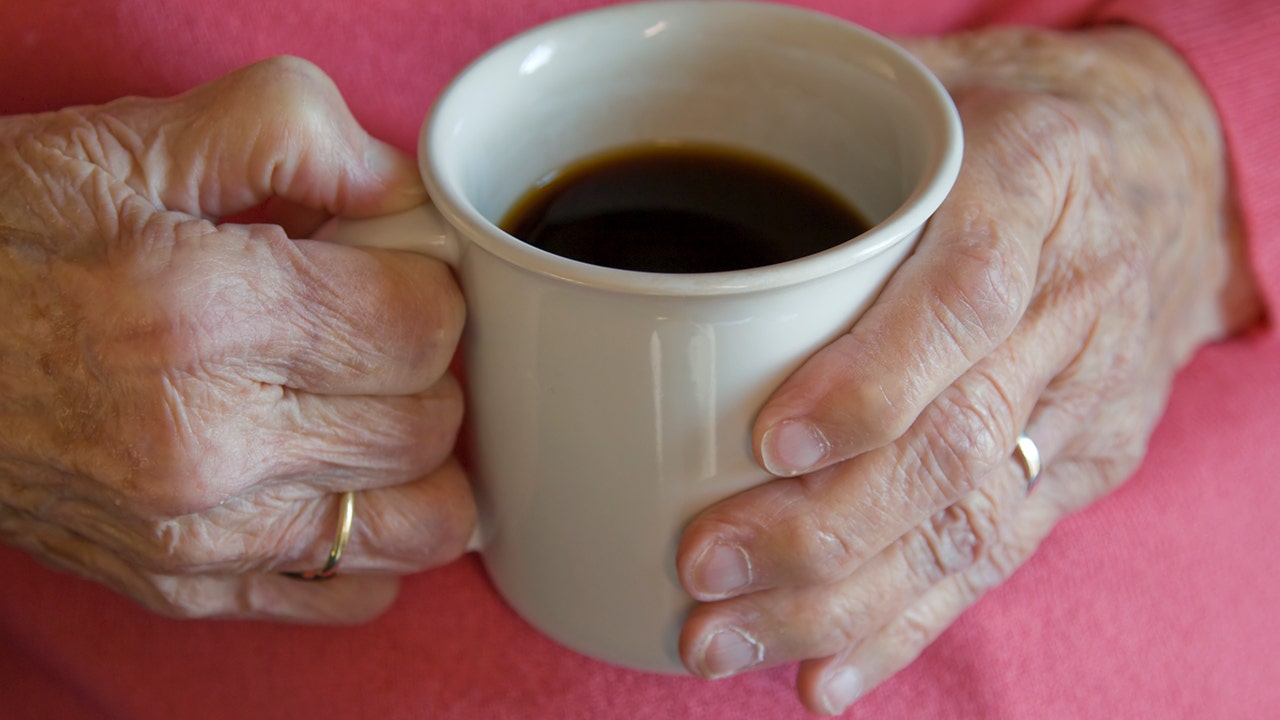Health
Life after death: Take a glimpse into the world of cryonics

Since the age of 13, Joseph Kowalsky has harbored a fascination with life after death, pondering ways to extend his existence indefinitely.
Today, Kowalsky, now 59, is among some 2,000 individuals who have signed up with the Cryonics Institute in Clinton Township, Michigan, betting on a future where death is not the end.
Chilling prospect of immortality
Cryonics, the process at the heart of Kowalsky’s hopes, involves preserving human bodies at ultra-low temperatures in the anticipation that future science will one day revive them.
MEN’S ENERGY AND VITALITY PLUMMETS FOR 6 REASONS. BOOST IT BACK UP THIS WAY
Shortly after a person dies, organizations like the Cryonics Institute use a heart-lung resuscitator, circulate a medical-grade antifreeze in the blood and suspend the body in aluminum pods filled with liquid nitrogen.
Dennis Kowalski, current president of the Cryonics Institute (and no relation to Joseph Kowalsky), told Fox News that over 250 individuals are currently in “suspension” at the Michigan facility.
Cryonics involves preserving human bodies at ultra-low temperatures in the anticipation that future science will one day revive them. (Cryonics Institute)
Could defying death be affordable?
The Cryonics Institute is just one player in a burgeoning industry.
Alcor, the world’s oldest cryonics company, which is based in Scottsdale, Arizona, boasts a state-of-the-art facility where more than 200 individuals are preserved.
MEDITERRANEAN DIET COULD HELP WOMEN LIVE LONGER, HARVARD STUDY FINDS
For those opting for whole-body preservation, the price tag is $200,000, while brain-only preservation costs $80,000.
Alcor CEO James Arrowood dispels the notion that cryonics is solely for the wealthy, highlighting that many clients use life insurance policies to cover costs.

Over 250 individuals are currently in “suspension” at the Michigan facility, the president of the Cryonics Institute told Fox News. (Cryonics Institute)
“About 80% of people who sign up are middle-class,” Arrowood told Fox News.
He pointed out that the clientele includes notable figures such as baseball legend Ted Williams, whose head and body were cryopreserved separately.
Skeptics cast doubt
Critics dismiss cryonics as speculative and unproven, labeling it an “iceberg scheme” lacking scientific backing.
CLICK HERE TO SIGN UP FOR OUR HEALTH NEWSLETTER
“It’s a sad case of people being beguiled by a very understandable dream of resurrection,” Clive Coen of King’s College London told Fox News.
The neuroscience professor raised concerns over the damage inflicted during the preservation and revival process, warning that “there will be billions of mini-strokes in every millimeter of brain tissue” due to the inability of antifreeze to traverse the brain’s complex landscape.
Hope springs eternal for death defiers
There is currently no scientific evidence or successful case of a human being revived from a cryonically preserved state.

For those opting for whole-body preservation, the price tag is $200,000, while brain-only preservation costs $80,000. (Cryonics Institute)
Despite the skepticism, Joseph Kowalsky, who formerly worked with the Cryonics Institute, remains undeterred.
“Worst-case scenario, I’m still dead … And the upside? It could be a potentially life-saving medical technique,” he said.
For more Health articles, visit www.foxnews/health
As science and ethics continue to grapple with the implications of cryonics, individuals like Kowalsky illustrate a deep-seated hope for defying mortality, one frozen body at a time.
Andres del Aguila and Griff Jenkins contributed to this report.

Health
Does Morning Lemon Water Really Help With Weight Loss?

Use left and right arrow keys to navigate between menu items.
Use escape to exit the menu.
Sign Up
Create a free account to access exclusive content, play games, solve puzzles, test your pop-culture knowledge and receive special offers.
Already have an account? Login
Health
Daily coffee drinking linked to major health benefit in women as they age, study finds

NEWYou can now listen to Fox News articles!
A popular morning beverage could do more than provide a perk. It could also help women stay healthy as they age.
That’s according to new research from Harvard University, which followed a group of nearly 50,000 women from the Nurses’ Health Study for a 30-year period.
The researchers found that drinking coffee every morning could help women stay mentally sharp and physically strong later in life, according to a press release from the American Society of Nutrition.
THE OPTIMAL TIME TO DRINK COFFEE ISN’T WHEN YOU NORMALLY HAVE IT
The benefits were seen in middle-aged women who drank caffeinated coffee. Decaf coffee and tea did not have the same effect.
“‘Healthy aging’ here meant surviving to older age without major chronic diseases and with good physical, mental and cognitive function,” Sara Mahdavi, Ph.D., a post-doctoral fellow at Harvard T.H. Chan School of Public Health, Harvard University, told Fox News Digital.
Drinking coffee every morning could help women stay mentally sharp and physically strong later in life, according to a new study. (iStock)
“Importantly, this relationship persisted even after accounting for key lifestyle factors like diet quality, physical activity and smoking — each of which are also strongly associated with healthy aging in their own right.”
The women who qualified as “healthy agers” were found to consume an average of 315 mg of caffeine daily, primarily via coffee-drinking.
WHAT IS MUSHROOM COFFEE? CAFFEINE ALTERNATIVE OFFERS SURPRISING HEALTH BENEFITS
Each additional cup of coffee was linked to a 2% to 5% greater chance of healthier aging, the study found.
Although soda also contains caffeine, people who drank it every day were shown to have a 20% to 26% reduced chance of healthy aging.

The women who qualified as “healthy agers” were found to consume an average of 315 mg of caffeine daily, mostly from drinking coffee. (iStock)
“The health benefits appeared specific to coffee, rather than caffeine more broadly,” Mahdavi noted.
“We didn’t see the same associations with decaf coffee, tea or caffeinated soda — suggesting that coffee’s unique combination of bioactive compounds may play a key role.”
The findings were set to be presented on Monday at NUTRITION 2025, the annual meeting of the American Society for Nutrition held in Orlando.
WOMEN MAY HEAR BETTER THAN MEN, NEW STUDY SUGGESTS
“While past studies have linked coffee to individual health outcomes, our study is the first to assess coffee’s impact across multiple domains of aging over three decades,” said Mahdavi.
“The findings suggest that caffeinated coffee … may uniquely support aging trajectories that preserve both mental and physical function.”
“The health benefits appeared specific to coffee, rather than caffeine more broadly.”
The researcher acknowledged that the study has some limitations.
“As with all observational studies, we cannot establish causality,” she told Fox News Digital. “While we adjusted for many factors, unmeasured confounding is always possible.”
CLICK HERE TO SIGN UP FOR OUR HEALTH NEWSLETTER
Mahdavi also pointed out that the study group mostly included white, educated female health professionals.
“Further work is needed to confirm generalizability to broader populations.”

“Moderate coffee intake may offer some protective benefits when combined with other healthy behaviors, such as regular exercise, a healthy diet and avoiding smoking.” (iStock)
Coffee’s benefits are “relatively modest” compared to the benefits of overall healthy lifestyle habits, according to the researcher.
“These results, while preliminary, suggest that small, consistent habits can shape long‑term health,” said Mahdavi. “Moderate coffee intake may offer some protective benefits when combined with other healthy behaviors, such as regular exercise, a healthy diet and avoiding smoking.”
“We don’t recommend starting coffee if you don’t already drink it or if you’re sensitive to caffeine,” she went on.
“But for people who already consume moderate amounts — typically two to four cups per day — this study adds to the evidence that coffee can be part of a healthy lifestyle.”

“The findings suggest that caffeinated coffee … may uniquely support aging trajectories that preserve both mental and physical function,” the researcher said. (iStock)
Mahdavi emphasized, however, that nutrition, regular exercise and not smoking are the “most powerful and proven contributors” to healthy aging.
The team is now planning to explore how coffee’s bioactive compounds — particularly polyphenols and antioxidants — might influence molecular aging pathways, including inflammation, metabolism and vascular health, Mahdavi said.
For more Health articles, visit www.foxnews.com/health
“Genetic and hormonal differences may also shape how individuals respond, which could pave the way for more personalized guidance in the future.”
Health
7 Healthy Condiments That Burn Fat, Support Digestion and Curb Hunger

Use left and right arrow keys to navigate between menu items.
Use escape to exit the menu.
Sign Up
Create a free account to access exclusive content, play games, solve puzzles, test your pop-culture knowledge and receive special offers.
Already have an account? Login
-

 Business1 week ago
Business1 week agoPlastic Spoons, Umbrellas, Violins: A Guide to What Americans Buy From China
-

 Movie Reviews1 week ago
Movie Reviews1 week agoMOVIE REVIEW – Mission: Impossible 8 has Tom Cruise facing his final reckoning
-

 Movie Reviews1 week ago
Movie Reviews1 week ago‘Magellan’ Review: Gael Garcia Bernal Plays the Famous Explorer in Lav Diaz’s Exquisitely Shot Challenge of an Arthouse Epic
-

 Technology1 week ago
Technology1 week agoThe oldest Fire TV devices are losing Netflix support soon
-

 Maryland1 week ago
Maryland1 week agoMaryland, Cornell to face off in NCAA men’s lacrosse championship game
-

 Tennessee1 week ago
Tennessee1 week agoTennessee ace Karlyn Pickens breaks her own record for fastest softball pitch ever thrown
-

 World1 week ago
World1 week agoAustralia begins cleanup after floods kill 5, strand thousands
-

 World1 week ago
World1 week agoPower outage disrupts final day of Cannes Film Festival, police investigate possible arson















